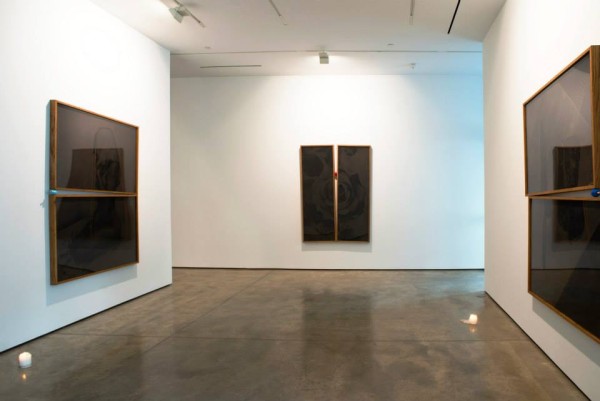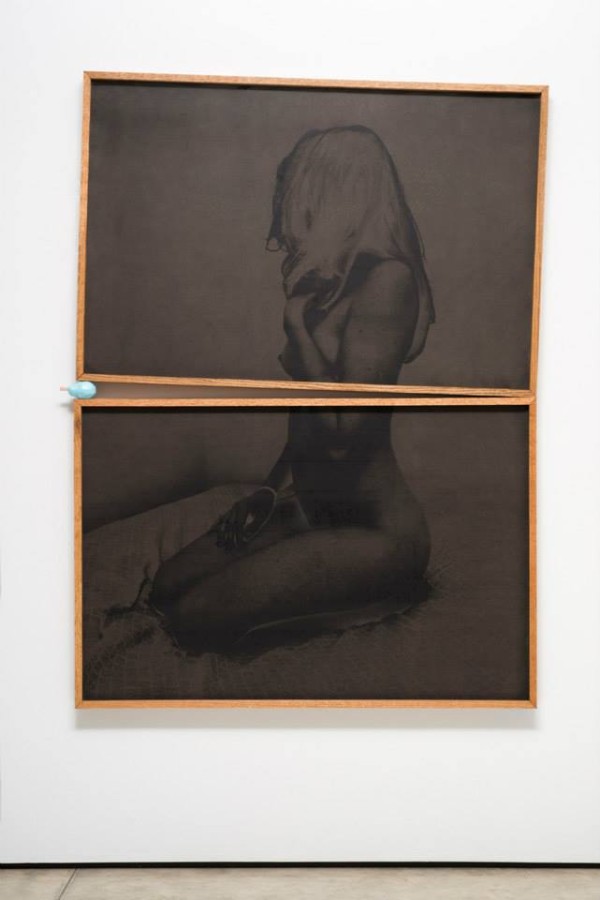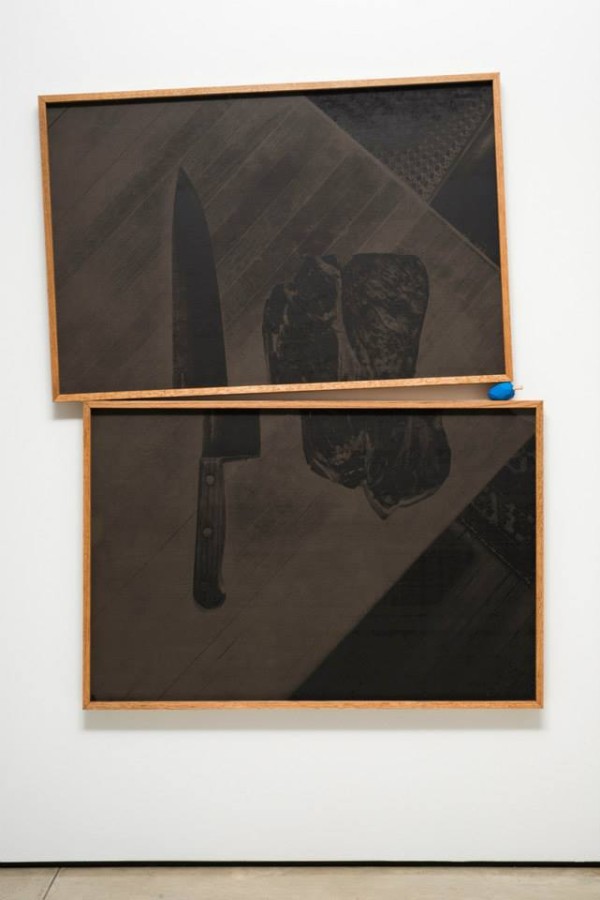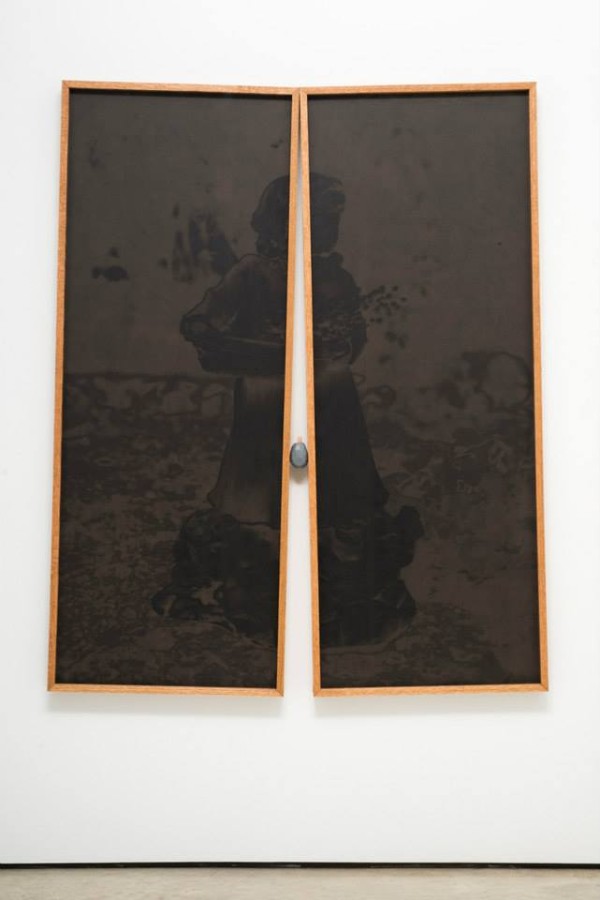Colby Bird
Friday, 19 June 2015
works from Hope Goes with Man to the Foot of the Gallows
Colby Bird’s most recent photographs are of objects (e.g., a candle, a rose, a statuette in a garden, a knife next to a raw steak) and a woman whose identity is never fully revealed.
The images are enlargements of Polaroid negatives (the component of instant film one peels away from the positive print and typically throws away). After scanning the negative and printing it large-scale, Bird paints each print with layers of wood stain until the paper is saturated. The resulting images have a velvety texture and a rich brown-black tone. Each image is cut in two, each half is framed separately, and the two halves pinch a piece of fruit between them (usually fresh produce, unless it is a likeness Bird carved from a block of wood).
This body of work is closely tied to Bird’s recent move from Brooklyn to upstate New York. Without the distractions of a major city, Bird’s thoughts have turned inward: toward evaluating his self-worth, his personal relationships, and ultimately, his mortality.
A new labor-intensive challenge Bird tackles with this body of work is the framing of his own photographs. His woodworking skills are far from masterful, but perfection is not the goal—Bird wants to establish a measure of economic accountability. Artwork is expensive, and its valuation is abstract and subjective. An example of a more straightforward transaction is paying a craftsman to frame a photograph. By framing his own prints, Bird is aligning his efforts with a profession more widely relatable than art-making and searching for concrete value and meaning in the objects he produces.
Despite the conceptual framework through which Bird filters his imagery—excessive labor, handmade frames, bisected photographs, slowly decaying fruit—at its core, the work is about love, loss, and self-reflection. In Hope Goes with Man to the Foot of the Gallows, Bird pulls back the veil of propriety to hint at his own personal insecurities, feelings of guilt, and pursuit of pleasure.
-Lora Reynolds Gallery, 2015







